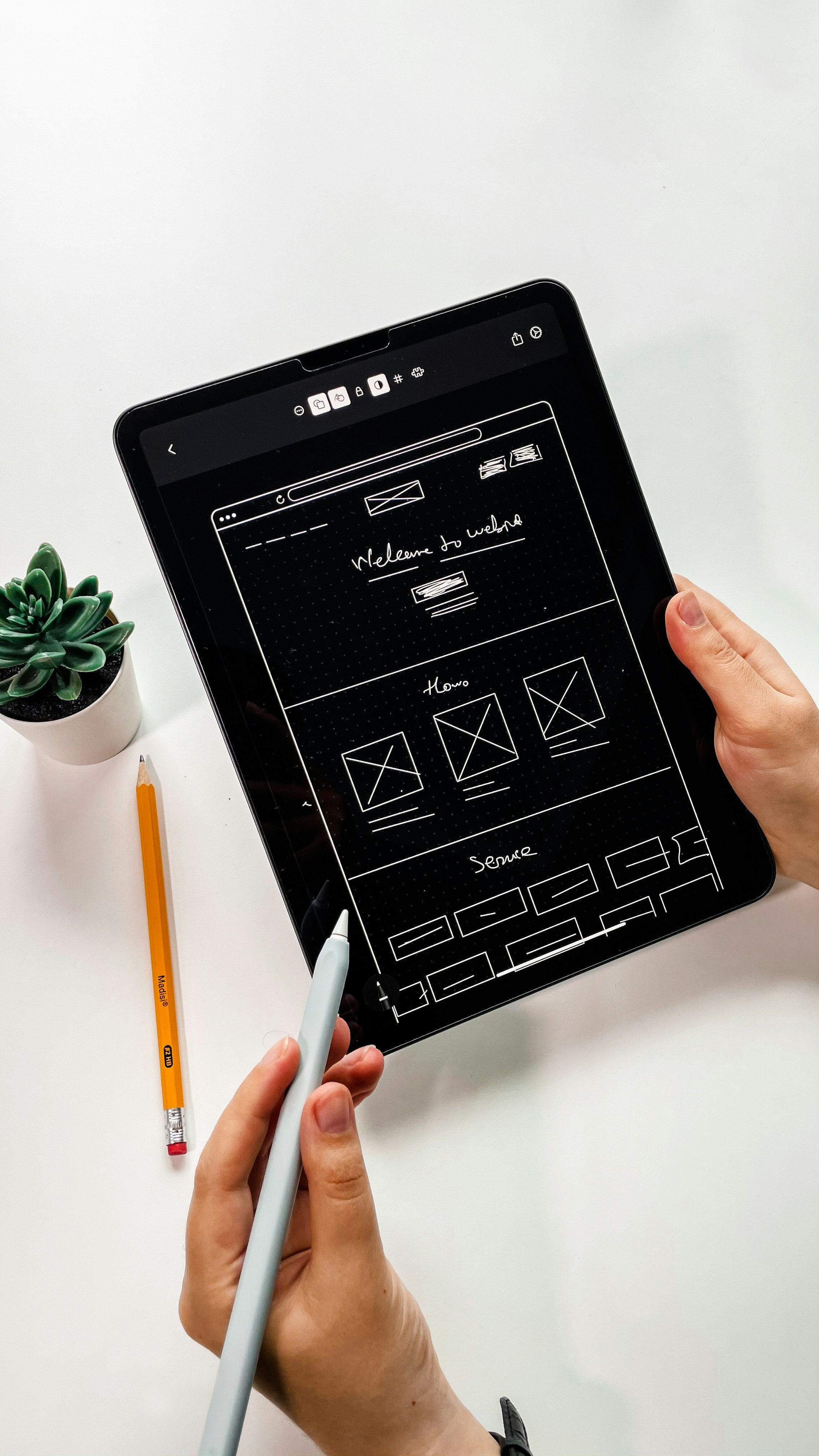What Is an Enterprise App? (+23 Examples)
Businesses can work smarter, faster, and with more flexibility than ever before thanks to enterprise applications and enterprise application software...
7 min read
Written by Keith Shields, Nov 5, 2024

Enterprise technology promises to make work easier and more enjoyable for teams. The problem, however, is that many enterprise tools face unique challenges, like complexity, compliance requirements, and legacy system integration. These issues (and more) often result in software that frustrates users with difficult-to-navigate interfaces, complicated workflows, and a lack of responsive design.
Done right, enterprise UX design becomes the antidote to these issues. User-centered software enables businesses to reimagine their tools, not as clunky dinosaurs, but as innovative technologies to facilitate success. In this comprehensive guide, learn about the world of UX design for enterprise applications, how to adopt it in your business software, and what you stand to gain by embracing it.
Enterprise UX design is designing user experiences for software applications used by large-scale organizations, such as hospitals, governments, schools, or manufacturing firms. Enterprise software encompasses a broad range of tools, serving everything from small startup teams to multinational corporations. Many tools from time-tracking and project management apps for one or two-person teams to much larger systems, like customer relationship management (CRM) or human resources management (HRM) software, fall under the umbrella of enterprise software.
Enterprise software tends to be more complex than consumer-facing apps. Enterprise UX design must consider many user types, functions, and inputs. For example, an enterprise resource planning (ERP) system might serve users in finance, fulfillment, and marketing functions and communicate with other internal systems, like ecommerce or CRM platforms.
While achieving an excellent enterprise user experience can be challenging, the stakes are also higher. Ineffective enterprise systems have the potential to undermine organizational success. Enterprise UX design, however, offers a tool to boost productivity, efficiency, and user satisfaction. In a competitive business landscape, these benefits of enterprise UX design matter. Impactful technology can be the factor that separates businesses that swim from those that sink.
For some, the term “enterprise software” brings to mind impractical business solutions with poor performance, frustrating user experiences, and irrelevant tools. Poor UX has historically been a symptom of the complexity of these systems and the disconnect between enterprise software buyers and users. What appeals to key decision-makers might not benefit the people “on the ground” doing the work.
While some legacy systems might fit the common perception that enterprise technology is outdated and difficult to use, modern enterprise software doesn’t. As user-centered design has become the standard for consumer apps, the same principles have also seeped into the enterprise design context. Today’s leaders and buyers increasingly recognize there’s a strong business case to be made for enterprise UX design.
Learn more: 7 Reasons Your Legacy System is Holding Your Organization Back
It’s a mistake to confuse enterprise UX design with simply aesthetic nicety. How users experience a product is so much more than beautiful interfaces. To understand the importance of enterprise UX, consider the impact of bad UX on businesses. Hard-to-use, outdated, or unintuitive software isn’t just frustrating for users; it’s also detrimental to the firm’s success.
Decreased productivity from poorly designed systems can hurt a company’s bottom line and reduce its ability to compete in the marketplace. Software that doesn’t adequately support its intended business goal can also seriously affect quality. Likewise, difficult-to-navigate systems often lead to increased errors, eroding consumer trust and even opening the firm up to security issues. Ineffective enterprise UX contributes to employee frustration, reducing morale and hiring strength.
With so much at stake, companies can’t afford not to invest in enterprise UX design. At the same time, well-designed enterprise software presents exciting opportunities to improve productivity, employee satisfaction, customer experience, and competitiveness.
Achieving an excellent enterprise UX design can be challenging. Even experienced designers fall into these common traps. Learn these top mistakes to avoid them and build strong and effective enterprise technology.
Enterprise software often must achieve many different functions. This complexity can translate into feature-focused, rather than user-centered designs. Overemphasizing features tends to result in complicated, overwhelming interfaces. While functionality is important, it must be balanced with ease of use. After all, features are useless if users can’t access or leverage them easily.
User research for enterprise technology differs entirely from that of a consumer-facing app. Multiple user groups and more than one goal can complicate the user research process. Still, involving end-users throughout the design process is no less important for an enterprise app. User testing verifies, or corrects, assumptions about user behavior and preferences, ensuring the resulting product helps solve real user pain points.
Gone are the days of “desktop-first” design. Workers increasingly expect to access enterprise applications from any device, whether at their desks or on the go. This growing trend of device-agnostic design means enterprise UX design cannot ignore mobile or responsive design. Today, enterprise software designs that adapt to various screen sizes and resolutions are a must.
Successful enterprise UX design considers the needs of all users, including those with disabilities. Not only is accessible design the right thing to do, but there are also practical reasons to pursue it. Companies with inaccessible enterprise software open themselves up to litigation from employees, customers, and partners, particularly for software that could require public accommodation under the Americans with Disabilities Act (ADA). Inaccessibility can also be a mark on your brand reputation, frustrating prospective or existing customers who see your lack of accessibility as an ethical failure.
An enterprise technology is only as effective as its implementation to some extent. Failure to successfully introduce new software to employees can hinder its impact. Recognize that users, and perhaps especially enterprise software users, are often resistant to change. The importance of comprehensive onboarding and training resources cannot be overstated. Enterprise UX design extends beyond the product itself to its actual adoption. In the best cases, introducing the new software minimizes disruptions by including key users in the conversation far before going live.
While the same UX principles—like simplicity, user testing, and mobile-first design—apply to both enterprise and consumer UX design, business tools must overcome some distinct hurdles. Understanding these challenges from the outset can make it easier to address them effectively through enterprise UX design.
Enterprise software can be massive, encompassing numerous functions, users, and data sources. The inherent complexity of enterprise applications makes enterprise UX challenging. Large-scale systems in particular require clean information architecture, intuitive navigation, and effective search functionality. When done well, enterprise UX design makes complexity manageable for users, giving them the tools to explore and access relevant features quickly and easily.
Usually, enterprise technologies cater to many different types of users, each with varying degrees of skill and different priorities. With this in mind, business-focused tools demand flexibility. Adaptable interfaces that accommodate each user’s needs and preferences can help manage diverse user groups within the same system.
Enterprise tools often supplant existing legacy systems. Mapping outdated technology to newer tools can be a huge undertaking, requiring careful planning. Integrating new software isn’t as easy as simply starting from scratch. Instead, a phased approach ensures minimal service disruption and a smooth transition.
Learn more: Enterprise Application Development Integration Guide
Enterprise UX design must recognize the critical nature of data security and compliance in business environments. One security breach can be detrimental to a company’s reputation and financial standing. Likewise, failure to comply with applicable regulations, like the Sarbanes-Oxley Act (SOX) for publicly traded companies or the Health Insurance Portability and Accountability Act (HIPAA) for healthcare providers, can be costly. User-centered interfaces support businesses' security demands by minimizing user errors and providing clear feedback.
Designing effective enterprise technology isn’t easy, but embracing enterprise UX design offers some major benefits. These opportunities demonstrate the power of user-centered design in the business software space.
Enterprise UX design can potentially supercharge a company’s productivity, acting almost like additional employees. For example, AI-enabled marketing analytics software might cut the time it takes to create personalized customer content in half. An electronic health record (EHR) system might spot errors in patient insurance information as they’re entered, streamlining workflow for employees and increasing collections. Successful UX implementations like these multiply teams' work and make their efforts go even further.
Too often, there’s a disconnect between those purchasing an enterprise tool and those who use it. However, considering the UX design's emotional impact on users can boost key employee metrics. User-friendly software can make work delightful for employees. Positive experiences with enterprise systems can improve employee morale and reduce turnover.
One of the more unexpected impacts of enterprise UX is its effect on customer experience. Whether customers are direct software users or not, well-designed systems ultimately impact buyers’ interactions with a brand. Excellent products can indirectly boost customer satisfaction by empowering employees to provide better service. When it’s easier to do your job, it’s easier to go above and beyond for your customers.
Learn More: Why Good UX is Important for CX
Investing in UX can reshape a company's future by differentiating it from its competitors. Excellent user experiences can be a rarity, especially in some markets where clunky, legacy systems still have a foothold. Enterprise UX design can help build brand strength, attract top employees, and drive innovation and growth.
Even the most complex applications have the potential to become easily navigable, intuitive, and delightful for users. These examples demonstrate the power of UX design to transform a user experience.
Before:
After:

For decades, Earth Technology Integration (ETI) has provided web apps that governments rely on in emergencies. The organization came to Designli looking for a long-term maintenance and design project. Our ‘pilot project’ demonstrated value with a dedicated product team that provided UX-optimized interface mockups for new features. Today, our product owner is the key design resource for all ETI systems.
Before:
After:
LidoNation is a global community and education hub for Cardano, a blockchain platform and cryptocurrency. Its Catalyst Explorer uses distributed accountability to create a collective resource for finding proposals and directing research, improvement, and innovation within the Cardano community. Designli’s UX design improvements make the interface more intuitive and, therefore, more useful for visitors.
Designing an effective and positive enterprise technology experience is not without challenges. Still, ignoring the importance of user experience in business applications can jeopardize a company’s success. Investing in UX design enables businesses to unlock their full potential, with opportunities to improve productivity, employee satisfaction, competitiveness, and customer experience. Companies that embrace a culture of enterprise UX design can enjoy long-term success.
Looking for a partner to help you avoid common enterprise UX mistakes and enjoy the benefits of enterprise UX design? Let’s talk. Designli helps companies overcome common enterprise development challenges and achieve exceptional user experiences. Schedule a free consultation to learn more.
Explore our Custom Software Development Services →
You Might Also Like:
Subscribe to our newsletter.

Businesses can work smarter, faster, and with more flexibility than ever before thanks to enterprise applications and enterprise application software...

In the bustling world of technology, user experience (UX) sits at the heart of success. But the “one size fits all” notion doesn’t always apply at...

Looking to streamline operations, optimize customer interactions, or transform how your organization works? Understanding the difference between...
Post
Share